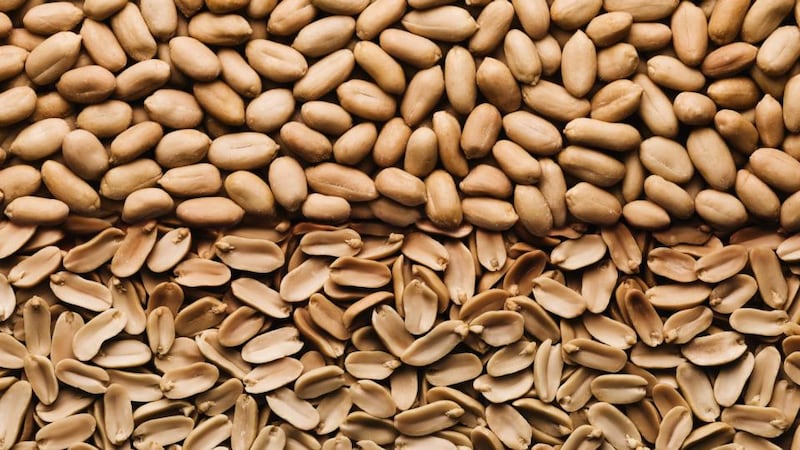The least scary part of Halloween should be the treats, but for many they are a nightmare. It’s a good idea to think ahead this mid-term break and have a plan.
Have dinner before they trick or treat. Set limits in advance of the witches jetting off on their broomsticks. You can limit the number of houses they call to or limit the amount of sweets they collect, to avoid the never-ending “just one more” scenario. Smaller skull cans or poison bags can curtail the sheer volume of cheap sugary sweets eaten.
If at all possible, buy less sugar for the little goblins and fairies and look for special offers in non-food items like Halloween stickers and pencils, small boxes of crayons or bubbles.

Small boxes of raisins, fruit snacks, cereal bars and small bags of popcorn are handy. There’s an opportunity here to teach and model moderation, rather than banning sweets.
Many parents take the main focus off the sweets and establish family rituals of bobbing for apples, costume design, carving pumpkins, roasting seeds and stuffing leaves into a life-size scarecrow for the front door.
Peanuts and tree nuts are synonymous with this time of year. They contain healthy monounsaturated fats and are good sources of niacin, folate, vitamin E, protein and manganese.
They also contain resveratrol, the phenolic antioxidant also found in red grapes and red wine. This may be partly responsible for the French paradox, where the French, despite enjoying their healthy fats, have a lower risk of cardiovascular disease.
Peanuts, however, can mean a trip to the A&E for parents of allergic children. Peanuts are not the same as tree nuts such as almonds, cashews, hazelnuts, Brazil nuts and walnuts.
Peanuts grow on long tendrils underground and are part of a different plant family, the legumes (peas, beans and lentils).
The Irish Food Allergy Network reports that up to 50 per cent of children with peanut allergy will develop tree-nut allergy; all children are best to avoid tree nuts from first diagnosis until tested for tree nuts using a skin prick test or specific IgE test.
Between 60-70 per cent of first reactions to peanuts are mild to moderate but, as the severity of future reactions is hard to predict, children or their parents need to carry epinephrine auto-injectors.
Wearing Medic Alert bracelets with brief details of the allergy and a contact number in case of an emergency is a good safety measure this time of year.
While children often grow out of other allergies, peanut allergy is resolved in only about 20 per cent of cases, especially in those children who develop the allergy before the age of two.
For any parent out there who suspects an allergy, it is vital to have it medically confirmed.
The Irish Food Allergy Network website was established by Prof Jonathan Hourihane and paediatric dietitian Ruth Charles to help health professionals in diagnosing suspected food allergy in the community and hospital.
The network's tips on avoiding nuts
Get into the habit of reading food labels to check if a food contains nut or nut products. Avoid any food that says "may contain traces of nuts".
Read the labels of medicine, cosmetics and skin cream as these can also contain nut extracts.
Avoid foods without a label.
If the food label is unclear or causes doubt – leave it out.
Don’t buy peanuts and don’t have peanuts in the house.
Avoid Lupin also.
Nuts can be listed as an ingredient on a confectionary, food or medical label as:
Peanuts includes:
Ground nuts
Ground pea
Earth nuts
Pinder
Goober
Monkey nuts
Unrefined oils of peanut, arachis and groundnut.
Tree nuts include:
Cashew
Almond
Brazil
Hazelnut/filbert/cob nut/noisette
Pistachio
Pecan/hickory nut
Walnut
Macadamia/Queensland/candle nut
Unrefined oils of any of the above
Seeds are a good way to get extra nutrition into children’s nut-free desserts this Halloween. Chia seeds are high in fibre, protein and polyunsaturated fats. Per 100g they are also high in calcium, iron, zinc magnesium and selenium. Even if you don’t have an allergy in your house, these recipes are easy-peasy and delicious.
Grilled mango and chia seeds
Serves 2
1 ripe mango
2 tsps brown sugar
1 banana
For the topping
Mix the following:
2 dsps low-fat crème fraiche
2 dsps Greek yoghurt
2 dsps whole Chia seeds
Cut the mango in half lengthways, removing the stone. Score criss-cross lines across the flesh with a knife. Sprinkle with brown sugar and place flesh side up under a hot grill, until the sugar begins to caramelise. Remove from the grill and chop half the banana on top of each mango piece. Serve with topping.
Tropical summer fruit salad
According to Allergy UK, coconut is a seed rather than a nut and the majority of nut allergic people can eat them. Coconut is rich in calories, vitamins and minerals (100g of coconut meat has 351 calories, 36g of fat and almost 10g of fibre).
Serves 4
1 mango
1 avocado
1 papaya
½ pineapple
2 kiwis
Blend ¼ cup of raisins, 2 bananas and
juice of 2 oranges
Topping:
4 dsps shredded coconut
Cut fruit into good-sized pieces, except avocado, which is cut in very small pieces. Blend the bananas, orange juice and raisins together until smooth. Mix well with fruit and sprinkle with fresh shredded coconut.
Paula Mee is a member of the Irish Nutrition and Dietetic Institute. For an individual consultation with Paula, phone Medfit on 01-278 4423 or email info@medfit.ie for further information.








